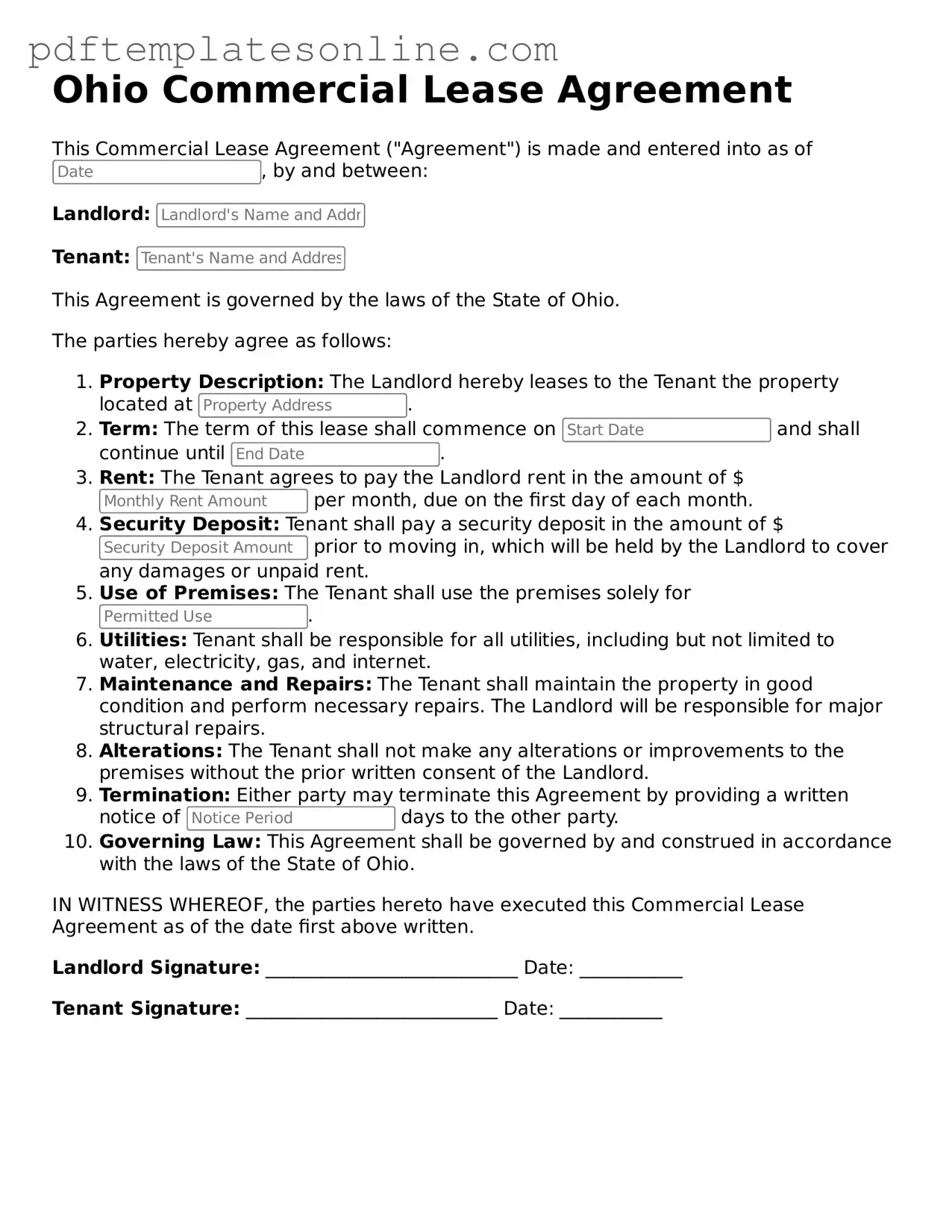Filling out the Ohio Commercial Lease Agreement form can be a straightforward process, but many people make common mistakes that can lead to serious issues down the line. One frequent error is failing to include all necessary parties in the agreement. It's crucial to list both the landlord and tenant correctly. Missing a party can create confusion and complicate any legal matters that arise.
Another common mistake is neglecting to specify the lease term. Whether it's a short-term or long-term lease, clarity is essential. Without a defined start and end date, both parties may have different expectations, leading to potential disputes.
People often overlook the importance of detailing the rent amount and payment schedule. It’s not enough to simply state the rent; the agreement should clearly outline when payments are due and how they should be made. This prevents misunderstandings and ensures both parties are on the same page.
Additionally, failing to address maintenance responsibilities can lead to significant problems. The lease should specify who is responsible for repairs and upkeep. If these responsibilities are not clearly defined, disputes may arise regarding who should handle maintenance issues.
Another mistake is not including provisions for renewal or termination of the lease. It’s important to outline what happens at the end of the lease term. Without clear terms, both parties may find themselves in a difficult position when the lease expires.
People sometimes forget to include any special clauses that may be relevant to their specific situation. For example, if there are restrictions on the use of the property or specific conditions that must be met, these should be clearly articulated in the lease.
One significant error is failing to review the lease thoroughly before signing. It's vital to read the entire agreement to ensure that all terms are understood. Rushing through this process can lead to signing an agreement that contains unfavorable terms.
Lastly, not keeping a copy of the signed lease can create challenges later. Both parties should retain a signed copy for their records. This ensures that everyone has access to the agreed-upon terms and can refer back to them if necessary.
